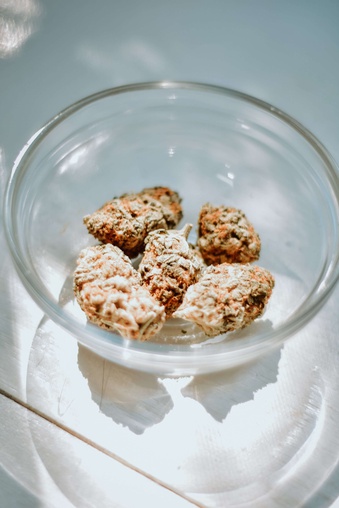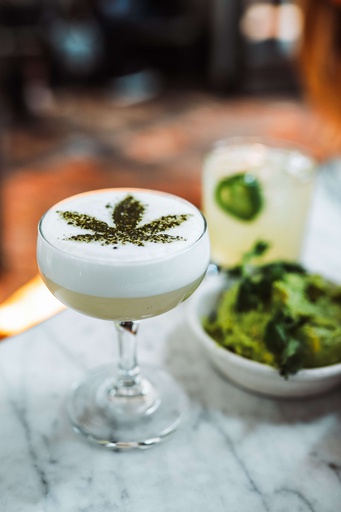Quand le mot « Cancer » fait son apparition dans la vie, il est bien souvent trop tard pour penser à son hygiène de vie. En effet, avant d’être réellement confronté à la maladie, on se croit souvent immortel. On pense que rien de grave ne peut nous arriver. Évidemment, c’est en amont et donc en prévention qu’il faudrait procéder en instaurant une hygiène de vie pratiquement irréprochable. Tant au niveau physique par l’alimentation par exemple qu’au niveau des émotions et ce, même au travers de notre connexion énergétique et spirituelle. Or, lorsque la maladie arrive dans notre vie, il ne nous reste plus beaucoup de solutions. Nous optons alors pour des soins curatifs et non plus préventif.
Chimiothérapie, radiothérapie, chirurgie sont tant de termes qui font peur et qui affolent – à raison – les plus sensibles. Bien heureusement, lorsqu’on s’intéresse plus en profondeur aux thérapies alternatives, on découvre un nouveau monde. Il existe effectivement toute une série de nouvelles possibilités plus en harmonie avec le corps et l’esprit. C’est dans cette recherche plus holistique qu’on pourrait se sentir attiré par une plante appelée Cannabis Sativa.
Thérapeutique ou euphorisante ?
Généralement connue pour son action euphorisante et planante, la plante de Cannabis a très mauvaise presse auprès de la majorité de la population. Pourtant, si on approfondit l’étude de cette plante, on découvre rapidement qu’elle possède de nombreuses vertus thérapeutiques. En effet, en ce qui concerne le cancer, le Cannabis Sativa permettrait de détruire les cellules cancéreuses, de diminuer les effets de la chimiothérapie mais également d’avoir un impact curatif sur le stress, très important d’ailleurs lorsqu’on se bat contre une maladie.

Afin de comprendre le mécanisme de la plante, voyons les deux molécules principales qui la composent :
– Le CBD – cannabidiole – est un cannabinoïde aux propriétés adaptogènes. Il régule la fonction surrénalienne en l’équilibrant tout en proposant une réponse positive au stress. C’est également cette molécule qui améliore la réponse du corps à la souffrance. Cette dernière permet au système nerveux d’ignorer la douleur. Dès lors, le CBD permettra de contrebalancer l’effet du THC.
– Le THC – tetrahydrocannbinol – est plus présent dans le Cannabis (uniquement dans la plante femelle) que le CBD. Cette molécule que la plante produit contient les propriétés psychoactives qui ont la réputation de rendre l’usage récréatif. La mauvaise réputation du cannabis est donc due au THC qui la compose.
Et pourtant, parallèlement à cette mauvaise image, certains études prouvent que le THC empêcherait les cellules cancéreuses d’évoluer et de croître grâce à ses propriétés anti-métastasiques.
Dès lors, c’est en utilisant la plante dans son intégralité, qu’on obtiendra les meilleurs résultats.
A ce jour, de nombreuses études prouvent les bienfaits d’une utilisation thérapeutique et particulièrement le cancer. En outre, on constate que les effets secondaires de certains médicaments sont bien plus dangereux qu’un usage supervisé, avec des posologies strictes, que le cannabis.
« Les cannabinoïdes pourraient provoquer des effets anti-tumeur par divers mécanismes, dont le fait d’induire la mort des cellules, l’inhibition de la croissance des cellules et l’inhibition de l’invasion tumorangiogenèse et des métastases. » (www.cancer.gov)
Comment l’utiliser ?
On préférera aisément un usage alimentaire de la plante. En effet, fumer le cannabis n’est pas la méthode la plus adaptée pour bénéficier des aspects guérisseurs de la plante. Les possibilités sont diverses avec la création d’huile ou de jus directement avec la plante fraîche.
Par exemple, pour un jus, le docteur Ty Bollinger recommande 15 feuilles et 2 bourgeons par jour, à ajouter aux autres fruits et légumes inclus dans la boisson.

Les conseils donnés sur le cannabis ne doivent en aucun cas se substituer à un traitement médical en cours. Dans le cadre d’un cancer, il est recommandé de faire une visite régulière chez un oncologue. Les protocoles en santé naturelle ne doivent pas être de l’ordre de l’automédication ou de l’auto traitement.



